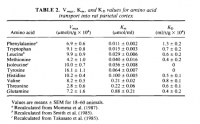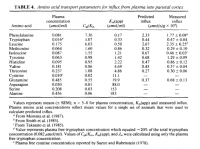Jigend
Member
- Joined
- Jun 9, 2017
- Messages
- 24
Never have I seen histidine mentioned as possessing nootropic-like qualities, but (in my layman way of understanding it) it seems like histamine is a stress hormone, no? Because the effects described by OP definitely seem dopaminergic, and not stress induced at all.
Is there any consensus regarding the supplementation with L-histidine?
And if it is unsafe, would supplementing with tyrosine achieve similar effects? I'm looking for ways to banish brain fog, procrastination, and somewhat depressive-like symptoms. That would help me get my life on track, get more work done throughout the day, and succeed. I am already peating - somewhat, that is. I drink tons of coffee, try to keep my sugar intake high throughout the day, and limit PUFA. I definitely feel my temps have gone up, but the focus and motivation still isn't quite there yet. Aspirin sometimes does it for me, but I need to get 2 500mg pills to get that effect, and I don't want to overdo it. All I'm seeking is a safe dopaminergic like effect that is safe to take for a month or so. That would do it for me. If L-histidine is safe for that amount of time, I'll do it. OP's description is exactly what I'm looking for.
Edit: I was googling niacin when stacked with histidine, and came up with this reddit thread.
The OP in that thread seems to support the idea that niacin flushes histamine out of the body. Is this yet another mainstream misconception? I thought niacin - although beneficial from a Peat standpoint - was supposed to increase histamine?
Edit 2: Assuming there's an aggravated risk of having L-histidine increase histamine, even without niacin, would taking an anti-histamine eliminate all the downsides of this amino?
Is there any consensus regarding the supplementation with L-histidine?
And if it is unsafe, would supplementing with tyrosine achieve similar effects? I'm looking for ways to banish brain fog, procrastination, and somewhat depressive-like symptoms. That would help me get my life on track, get more work done throughout the day, and succeed. I am already peating - somewhat, that is. I drink tons of coffee, try to keep my sugar intake high throughout the day, and limit PUFA. I definitely feel my temps have gone up, but the focus and motivation still isn't quite there yet. Aspirin sometimes does it for me, but I need to get 2 500mg pills to get that effect, and I don't want to overdo it. All I'm seeking is a safe dopaminergic like effect that is safe to take for a month or so. That would do it for me. If L-histidine is safe for that amount of time, I'll do it. OP's description is exactly what I'm looking for.
Edit: I was googling niacin when stacked with histidine, and came up with this reddit thread.
The OP in that thread seems to support the idea that niacin flushes histamine out of the body. Is this yet another mainstream misconception? I thought niacin - although beneficial from a Peat standpoint - was supposed to increase histamine?
Edit 2: Assuming there's an aggravated risk of having L-histidine increase histamine, even without niacin, would taking an anti-histamine eliminate all the downsides of this amino?
Last edited:




